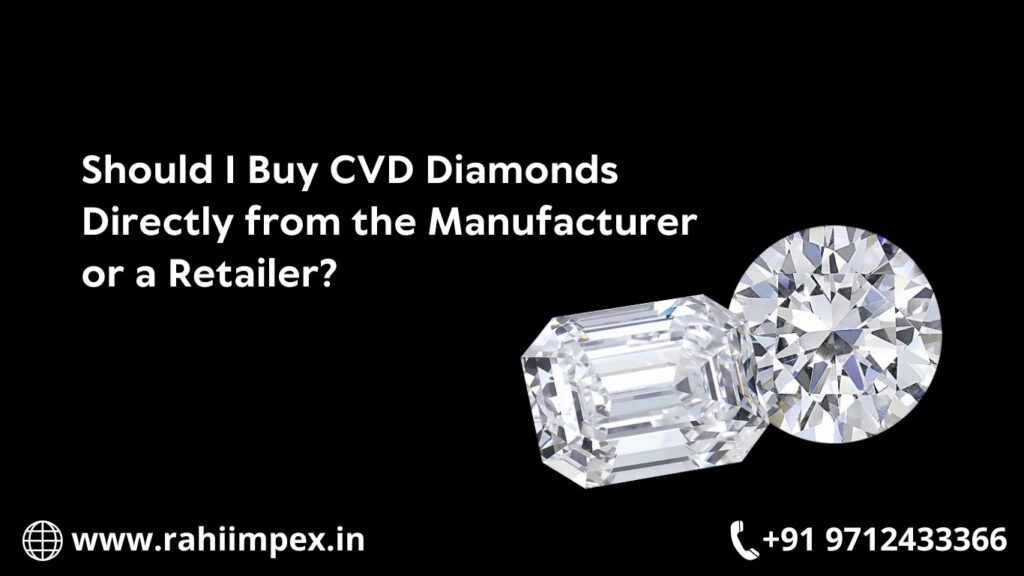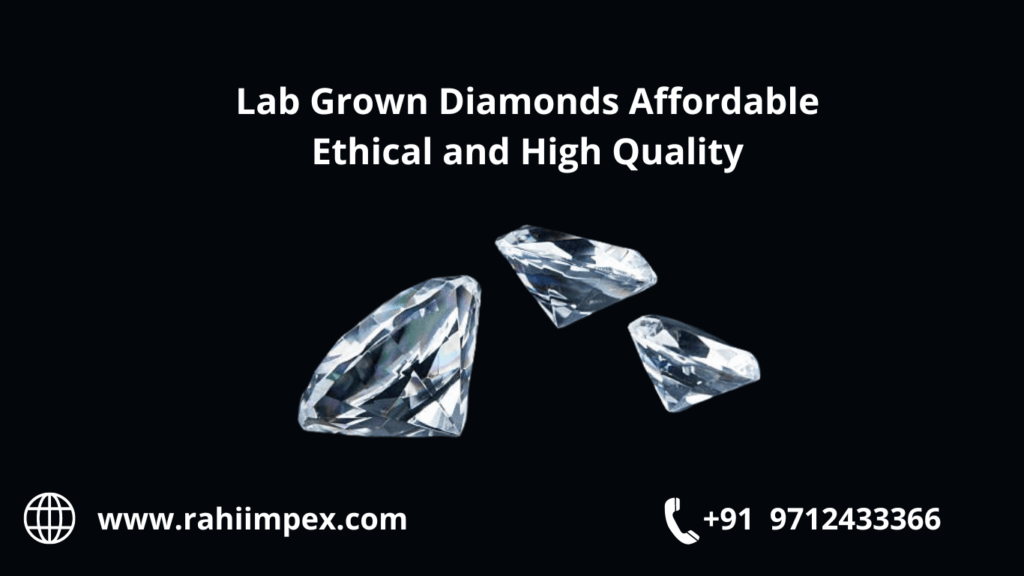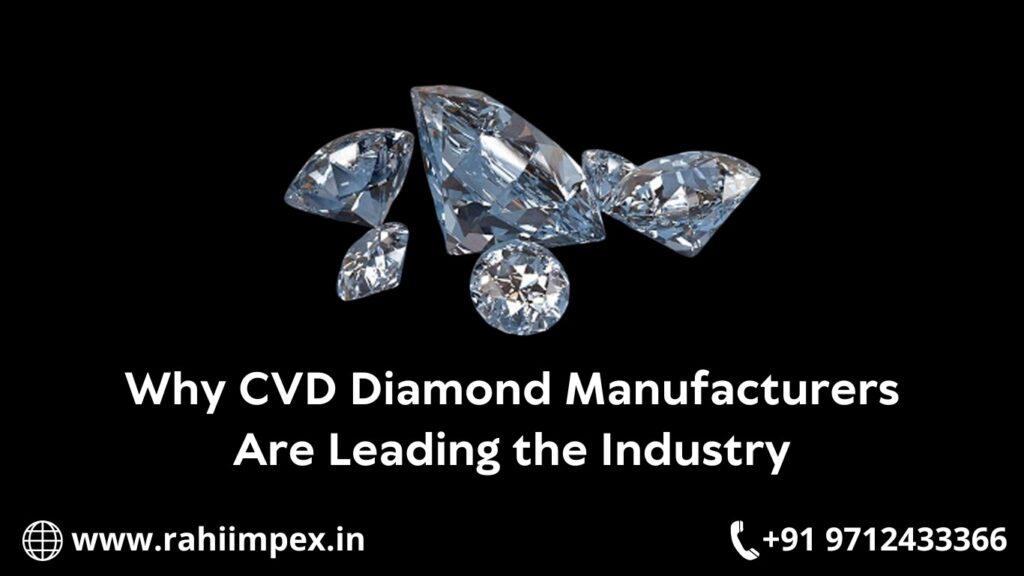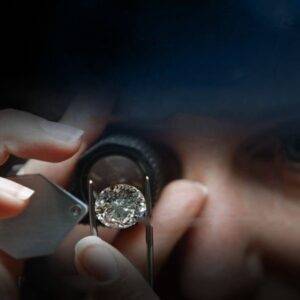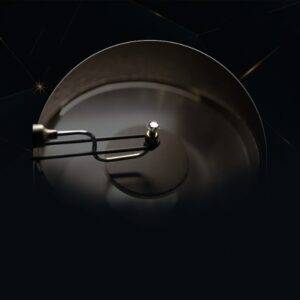Should I Buy CVD Diamonds Directly from the Manufacturer or a Retailer?
Diamonds are one of the most sought-after gemstones. They can be the perfect symbol of love and status. However, while buying a perfect piece of diamond jewelry, you may question yourself about whether to buy it at retail or wholesale prices, right? So, let’s explore the best option from where you must buy your CVD diamonds.
What are CVD Diamonds?
CVD diamonds are usually lab grown diamonds. These are created through a procedure known as Chemical Vapor Deposition. This procedure actually mimics those conditions that usually create natural diamonds. These diamonds are more sustainable and quite cheaper than natural diamonds. CVD diamond manufacturers usually grade these diamonds based on the 4Cs. Those are color, cut, carat, and clarity. Moreover, these are quite identical to natural diamonds.
Here are both the pros and cons of buying CVD diamonds from a manufacturer and a retailer.
Buying from the Manufacturer
Advantages
Buying CVD diamonds from the manufacturer usually have some advantages and also some disadvantages. Some of those are:
- Transparency
Today, many manufacturers offer proper information about the 4 cs of diamonds. Moreover, you can get reports or certificates that will clearly show the actual quality of the diamond.
- Lower Price
When you buy from the manufacturer, you are not dealing with a middleman. Thus, you can buy those precious gemstones at lower prices. Manufacturers don’t have to add a markup that can cover their retail expenses. Thus, you can easily save money compared to buying from retailers.
- Customization
Some diamond manufacturers offer customization options at affordable CVD diamond machine price. Thus, you can easily get a diamond that will fit your exact preferences. When you need a unique cut or design, you must buy it from the source. Hence, you can enjoy more flexibility compared to buying from a retailer.
Disadvantages:
- Limited Option
A diamond producer may not have many options compared to a retailer. So, when you need a pre-made jewelry, you won’t want to buy from manufacturers.
- Shipping and Return
Though manufacturers offer remarkable customer service, they may have some stricter return policies or may take longer times for shipping.
Buying from a Retailer
Buying CVD diamonds from the manufacturer usually have some advantages as well as some disadvantages, such as:
Advantages:
- Support and Warranty
CVD diamond retailers usually offer return policies, warranties, and even after-sales support. Thus, you can enjoy proper peace of mind after buying from a retailer. So, if you face any issue after buying a piece of jewelry, the retailer will help you with situations like exchanges or repairs.
- Variety
Usually, retailers can offer a wide range of jewelry options. So, you are searching for different carat sizes, cuts, or setting types, you can buy from the retailers of CVD diamond Surat.
Disadvantages:
- Limited Customization
Usually, most retailers cannot offer customization option for diamond jewelries. Thus, you may not like to buy from them if you are looking for some flexible options.
- Higher Price Options
Due to overhead costs, including store maintenance, marketing, staff, etc., retailers usually have higher prices of diamonds. Thus, you might have to pay some extra amount of money.
Conclusion
So, buying CVD diamonds from a retailer and a manufacturer, both options have some pros and cons to offer. Hence, the option of choosing from any one between these two mostly depends on your preferences. If you need transparency and lower prices, you can buy from the manufacturer. However, if you prefer a wide range of options, just buy from a retailer.
Should I Buy CVD Diamonds Directly from the Manufacturer or a Retailer? Read More »
